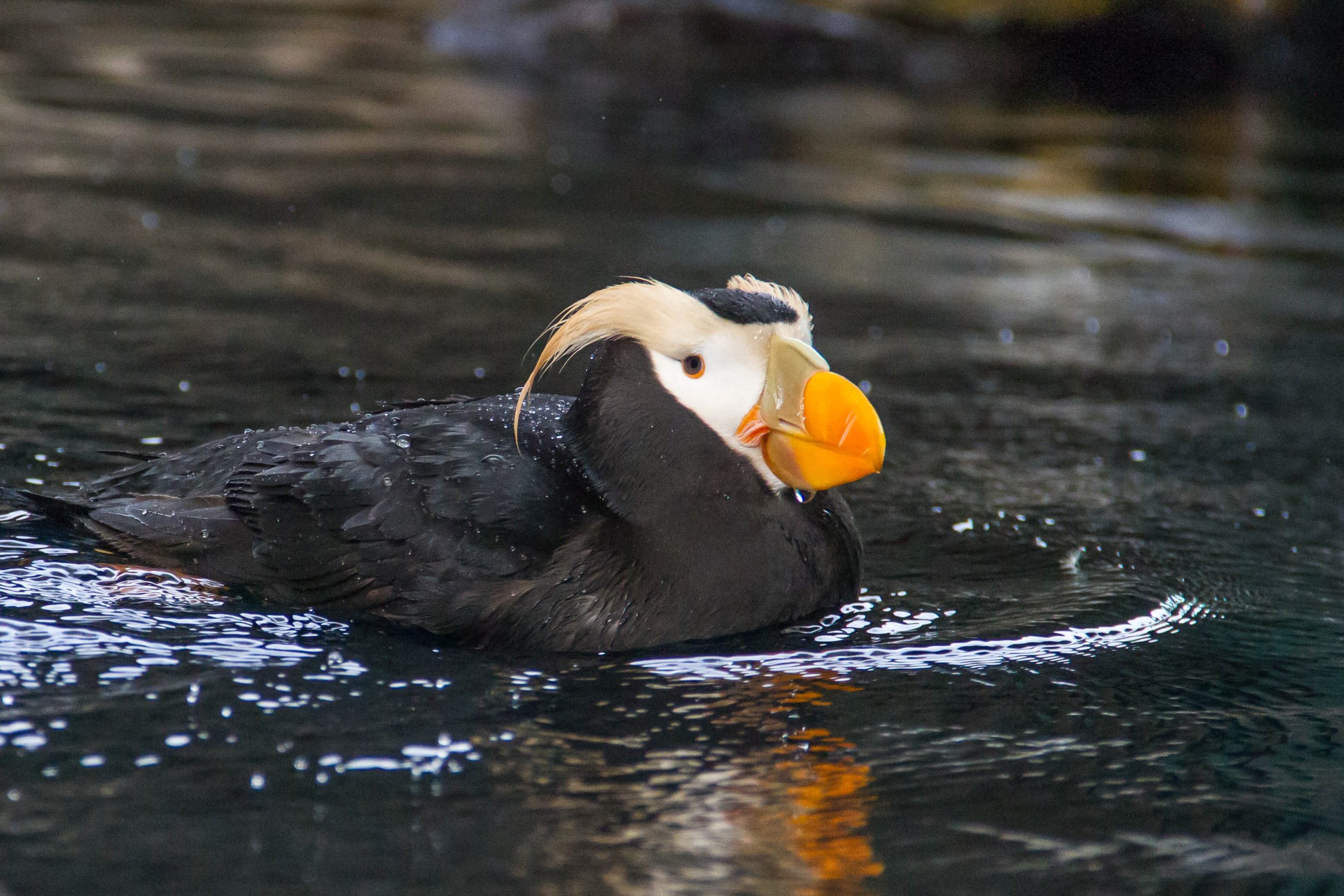Taking place from February 26 to March 3, Invasive Species Awareness Week is an occasion to raise awareness of the impact of invasive alien species on biodiversity and the importance of addressing this issue. Defined as species whose introduction and/or spread outside their natural past or present distribution threatens biological diversity, invasive alien species (IAS) are a threat to nature, economies, food security, and human health worldwide.
Island ecosystems, which harbor over 20% of our planet’s biodiversity, are particularly vulnerable. 90% of global extinctions on islands have been attributed mainly to IAS, according to the latest findings from IPBES’ Thematic Assessment Report on Invasive Alien Species and their Control. But the same conditions that make them vulnerable—the uniqueness of their ecosystems and their relative isolation—also produce the conditions for dramatic recovery.
 Tufted Puffin, Hawadax Island, Alaska. Photograph: Rory Stansbury/Island Conservation
Tufted Puffin, Hawadax Island, Alaska. Photograph: Rory Stansbury/Island Conservation
Removing invasive species from islands is a proven intervention with immediate and far-reaching benefits around the world. The success stories are numerous. Until May 2012, for example, Hawadax Island in Alaska was known as Rat Island. For more than 200 years, invasive rats threatened native birds on this rugged volcanic island chain, decimating their populations. Thanks to Island Conservation’s work to remove invasive rats from the island, Hawadax Island is now recognized as a thriving nesting site for a diverse array of seabirds. Among these is the Tufted Puffin, a species that had been absent from the island for nearly two centuries. In Hawaii’s Lehua Island, the successful removal of invasive rats also kick-started a full recovery of the island’s ecosystem, leading to the renewed breeding of numerous seabird species that had previously been threatened.
As highlighted in our annual Impact Report, 2023 was Island Conservation’s most impactful year yet. In total, we removed damaging invasive species from 7 large islands and 7 groups of islets (42 islets). Islands free from IAS show greater fish biomass and healthier reefs in their surrounding oceans—a result of the enriched nutrients introduced by healthy seabird populations. IAS removal not only helped restore the islands’ ecological balance but also resurrected their natural heritage, offering a beacon of hope for conservation efforts worldwide.
However, less than 20% of islands with globally threatened species have successfully eradicated invasive species, underscoring the urgent need for further action. While current tools have helped manage invasive species, they often fall short in delivering the affordability, speed, and scale needed to address this growing threat. New tools, including emerging genetic technologies, offer hope to help bolster conservation efforts and safeguard threatened ecosystems.
Invasive Species Awareness Week is the occasion to celebrate incredible conservation achievements. But it is also a reminder of the importance of exploring all tools at our disposal to tackle the global extinction crisis and restore biodiversity on islands.
Recent posts
